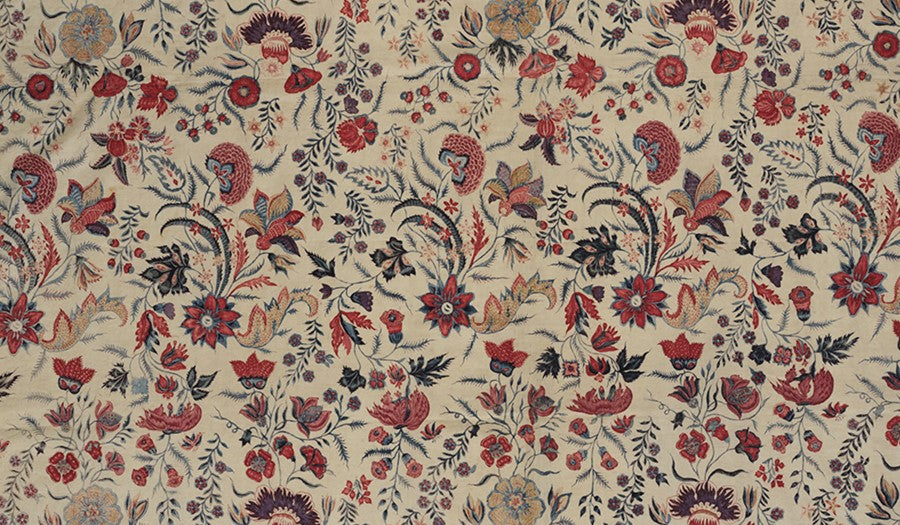
World-changing Chintz

Image: This indigo-dyed Indian chintz is decorated with an exuberant all-over, repeat pattern of mixed flower sprays. While some flowers (such as Clematis) are European, others including elephant apple and cotton are stylized versions of Indian plants (c) ROM.
For the first time in 50 years, many of the Royal Ontario Museum’s Indian chintz textiles and fashions have stepped out of their collection rooms and moved into the galleries. Two companion exhibitions, extended into 2021—The Cloth That Changed the World: India’s Painted and Printed Cottons and Florals: Desire and Design—celebrate the far-reaching influences of this vividly coloured cotton cloth. From eighteenth-century European dresses to twenty-first–century Indian saris, the garments on display reflect the ingenuity, skill, and enduring legacy of artisans who finessed the art of dyeing and designing cotton in bright and durable shades—a mastery that had widespread influence and impact. While Indian chintz sparked a global fashion craze, the extraordinarily high demand for the cloth led to new manufacturing methods, ushering in the Industrial Revolution. The fashions and fabrics on display tell the many fascinating stories of how Indian chintz has connected the world and its revival in the world of fashion today.

Image: Woman’s jacket. Made in coastal southeast India for the Dutch market; used in Hindeloopen, Friesland. Mordant-dyed and resist-dyed cotton, 18th century, 57.8 cm. ROM 962.107.2.
Exploring the fascinating stories behind the making and trade of these glorious pieces past and present, The Cloth that Changed the World considers India’s textile innovations and their influences on fashion, trade and industry around the world in places as far as Cairo, Japan, Sumatra, London, and Ottawa. They were the luxury fabric of their day, coveted by all, and one of the great inventions that drew foreigners to India’s shores hungry for more. Through trade-routes, encounters, and exchange, these cloths connected cultures, inspired imitation and, quite literally, changed the world.

Image: Illustration of the sacred lotus (Nelumbo nucifera), a plant native to India, published in Exotic Botany, Volume 1 by Sir James Edward Smith and James Sowerby in 1804. ROM Library Rare Books, gift of Dr. Noel Hynes, 2005.
Highlighting botany’s connection to the culture of the era, Florals invites visitors to discover an explosive period of botanical fascination and interest during which art, culture and nature were inextricably linked. This installation showcases influential botanical publications and illustrations from the 1700s alongside stunning Indian cotton fashion pieces and wall hangings covered with colourful hand-painted flowers. These select objects from the ROM’s collection showcase how Indian artisans customized cotton textiles to indulge the European fascination.
For more information visit www.rom.on.ca
